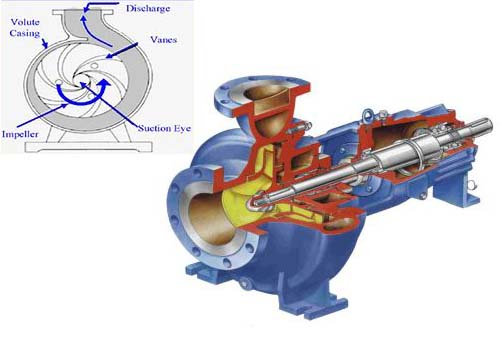The pump casing provides a pressure boundary for the pump and contains
channels to properly direct the suction and discharge flow.
The pump casing has suction and
discharge penetrations for the main flow path of the pump and normally has small
rain and vent fittings to remove gases trapped in the pump casing or to drain the pump casing for maintenance.
rain and vent fittings to remove gases trapped in the pump casing or to drain the pump casing for maintenance.
 |
| centrifugal pump |
Centrifugal pumps can also be constructed in a manner that results in two distinct volutes, each
receiving the liquid that is discharged from a 180o
region of the impeller at any given time.
Pumps of this type are called double volute pumps (they may also be referred to a split volute
pumps). In some applications the double volute minimizes radial forces imparted to the shaft and
bearings due to imbalances in the pressure around the impeller. A comparison of single and
double volute centrifugal pumps is shown on
















0 Comments
please do not any spam link in the comment box